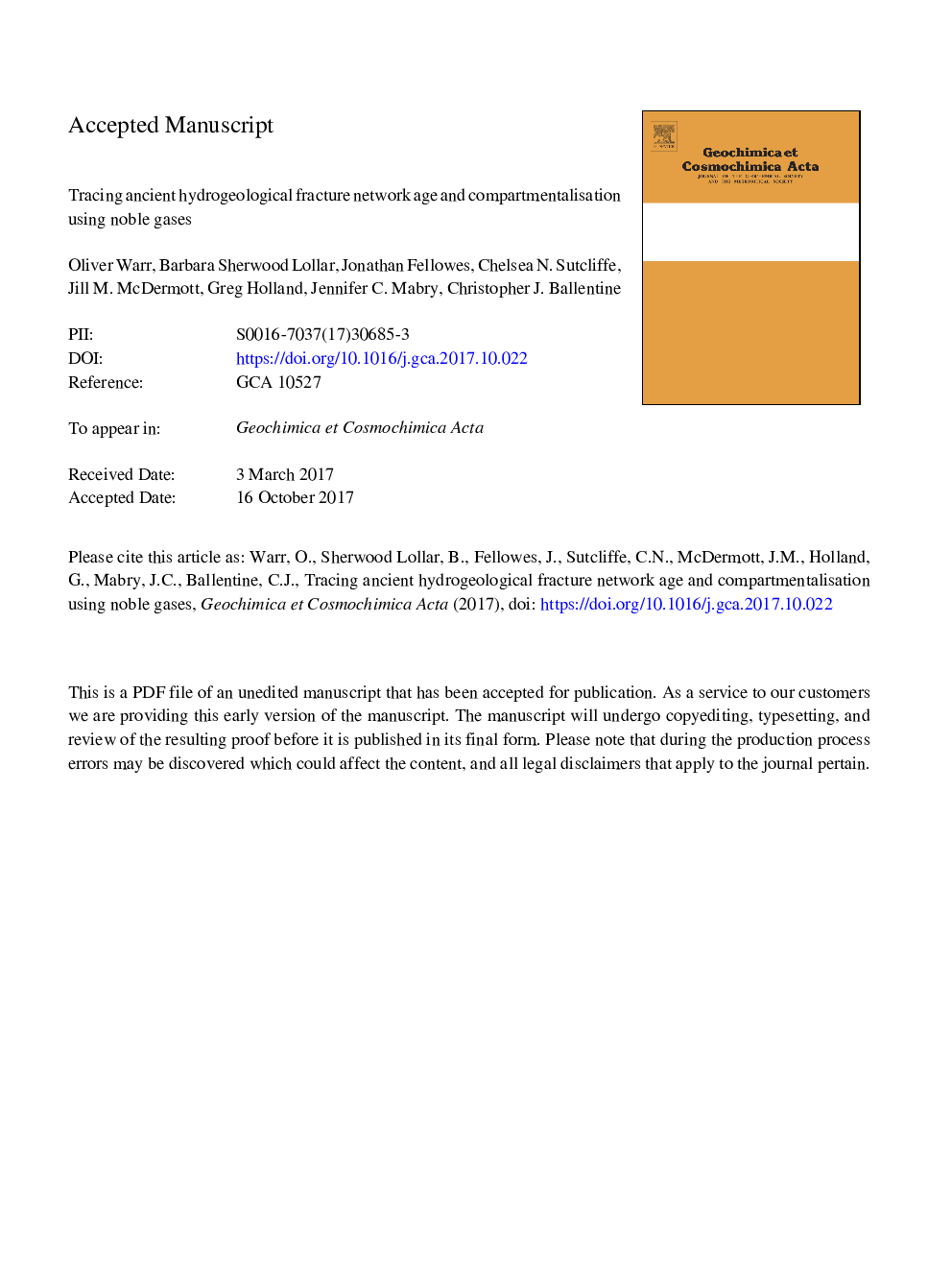| Article ID | Journal | Published Year | Pages | File Type |
|---|---|---|---|---|
| 8910952 | Geochimica et Cosmochimica Acta | 2018 | 66 Pages |
Abstract
The 2.9 km samples at Kidd Creek Mine show the highest radiogenic isotopic ratios observed to date in free fluids (e.g. 21Ne/22Ne = 0.6 and 40Ar/36Ar = 102,000) and have MRTs of 1.0-2.2 Ga. In contrast, resampled 2.4 km fluids indicated a less ancient MRT (0.2-0.6 Ga) compared with the previous study (1.1-1.7 Ga). This is consistent with a change in the age distribution of fluids feeding the fractures as they drain, with a decreasing proportion of the most ancient end-member fluids. 129Xe/136Xe ratios for these fluids confirm that boreholes at 2.4 km versus 2.9 km are sourced from hydrogeologically distinct systems. In contrast, results for the Sudbury mines have MRTs of 0.2-0.6 and 0.2-0.9 Ga for Mines 1 and 2 respectively. While still old compared to almost all groundwaters reported in the literature to date, these younger residence times compared to Kidd Creek Mine are consistent with significant fracturing created by the impact event, facilitating more hydrogeologic connection and mixing of fluids in the basin. In all samples from both Kidd Creek Mine and Sudbury, a 124-128Xe excess is identified over modern air values. This is attributed to an early atmospheric xenon component, previously identified at Kidd Creek Mine but which has to date not been observed in fluids with a residence time as recent as 0.2-0.6 Ga. The temporal and spatial sampling at Kidd Creek Mine is also used to verify our proposed conceptual model which provides key constraints regarding distribution, volumes and residence times of fracture fluids on the smaller, regional, scale.
Keywords
Related Topics
Physical Sciences and Engineering
Earth and Planetary Sciences
Geochemistry and Petrology
Authors
Oliver Warr, Barbara Sherwood Lollar, Jonathan Fellowes, Chelsea N. Sutcliffe, Jill M. McDermott, Greg Holland, Jennifer C. Mabry, Christopher J. Ballentine,
